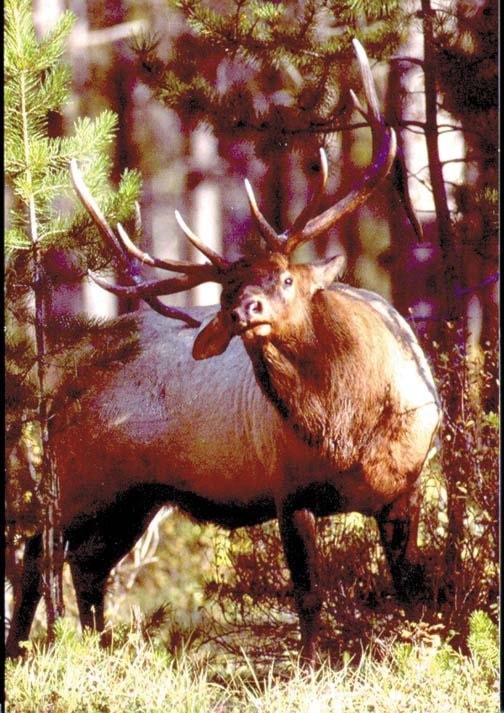F.J. Hurtak
A fter more than 40 years of elk hunting I still find myself learning things from these majestic animals. That alone is part of the reason I continue to hunt them, because just when you think you know everything there is to know about them, they surprise you with something you didn't know.
So, in this article I am going to share with you a couple of the lesser known secrets that I have picked up over the years.
As with most hunters it's been trial and error for me, with more emphasis on the word 'error' than 'trial'. Those secretive old bulls don't make many mistakes and at close quarters the odds are always in their favour. That,of course, is the way it should be and is one of the reasons a good representative of the species is a tremendous trophy.
In our part of the country I don't think there is any doubt that a good 6-point bull is the most sought after big game animal for hunters. Harvesting one usually requires a lot of time and effort, so I think the more you know about them the better your odds of filling your tag and stocking your freezer with with some great meat for those cold winter months.
The Distant Drummer
Bull elk can sometimes make a drumming sound, which is the best way to describe this little known portion of their rutting ritual. This is as a result of a rutting bull beating his penis on his stomach repeatedly, and can very often be part of a bugling sequence a hunter is engaging in with a bull. It's very difficult to describe exactly what it sounds like, but it's a sound like no other in the elk world — kind of a dull clunking sound that doesn't seem to belong with all their other classic sounds such as bugling, grunting, chuckling, antler thrashing, etc. You do have to be fairly close to pick up on the sound but I've heard it, and my hearing is not the greatest anymore. So hunters with better hearing than I may be able to key in on the source from longer distances than what I could.
As all serious elk hunters know it is very often the case that a bull will go silent during a calling sequence. When that happens self-doubt begins to creep in. Is he still there? Did I do something wrong and spook him? Did the wind shift just enough for him to catch my scent?
All those thoughts were going through my mind a couple of years ago after about a half hour of hot bugling, back and forth, with what sounded like a very nice bull. Then silence followed for 15 minutes despite my attempts to get him to answer my calls again and reveal his location. Then, just down behind me and off to the left about 40 yards, I heard that drumming sound I am referring to.
"Could that be the bull"? I thought. I gambled, and inched my way down a few yards through the heavy cover where I could possibly see a little ways below the ridge I was on. I wasn't disappointed. The ivory tips of his antlers were poking out from behind a patch of alders less than 20 yards away. His back end was fully exposed and it was there I got an up-close-and-personal look at a bull elk making that distinct drumming sound. His tawny hide and chocolate underbelly were dripping wet from the urine he was marking his territory with, and he was whipping himself into a rutting frenzy. The wind was still in my favour and from previous experiences I had a pretty good idea that this bull was actually going to make his way up to the ridge I was on, in an effort to get directly downwind of where he had heard my last bugle come from.
As a result of the thickness of the cover, I was still unable to determine if this was a legal 6-point bull, so I moved ever so slowly again to a position that was directly below the bull who was now ravaging one of the alder trees with his antlers. Soon after, he turned and walked directly up to the spot I had just vacated. I was within 15 yards of him now and he was looking away from me with no idea I was even there.
I could smell the musky barnyard odor from the bull, and now I could clearly see those very nice 5-point antlers — during the rifle season in the high country they must possess at least 6-points on one side. This one did not, despite my wishful thinking to try and make another point appear.
Only about 30 per cent of the bulls I have encountered over the past 20 years have been six points, so it was not unexpected, and I was still elated about having another wonderful experience with a good size bull, and the knowledge I had gained.
I am absolutely certain that if I had not taken the time to investigate the drumming sound I would have never seen that bull, as once he got directly behind me, and caught my scent, the hunt would have been over in quick fashion. We all know how frustrating that can be.
Next Week – Part 2 Some Things You may not Know About Bull Elk
F.J. Hurtak is the author of the books Elk Hunting in the Kootenays and Hunting the Antlered Big Game of the Kootenays available at selected retailers in B.C. and Southern Alberta. All profits go to land for wildlife or habitat restoration.
